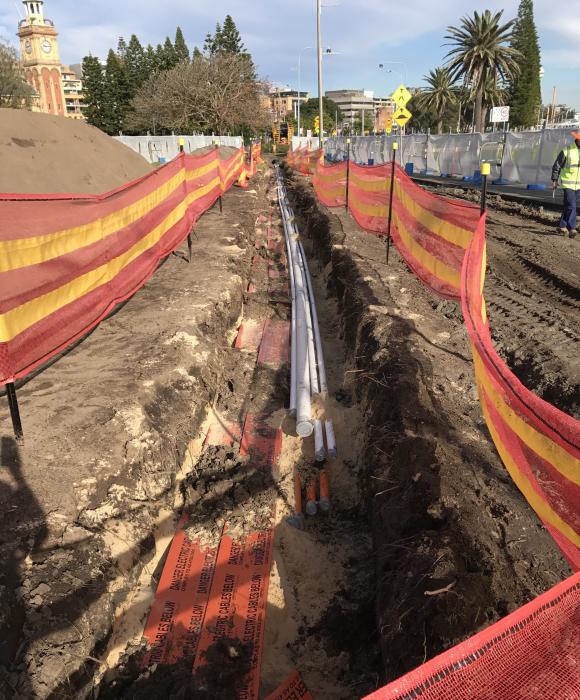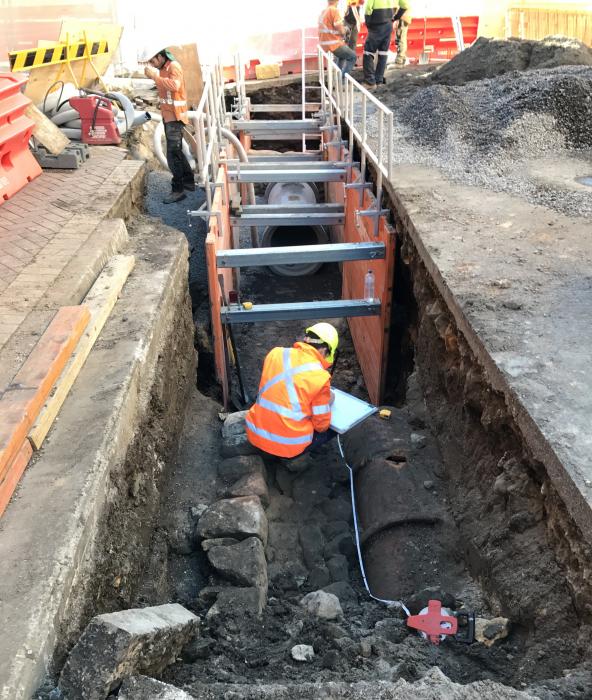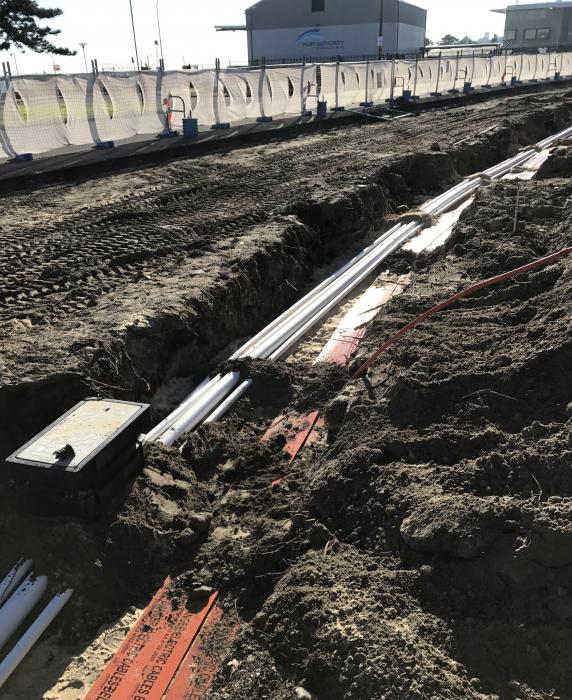What lies beneath: clash coordination and underground services



Underground services and utilities are the lifeblood to support our everyday lives. As we redevelop our urban areas, we often need to upgrade them, or simply avoid damaging them during the process of development.
If an underground service is compromised, the ramifications can be far reaching and even life-threatening. Risks can impact commercial (project delays and cost overruns due to damaged services), reputation (community / stakeholder impact) and people / property (in severe cases of explosions / bursts).
It’s a minefield (pardon the pun), because these services and utilities are:
- Underground (and invisible)
- Often not accurately surveyed
- Sensitive to damage by contractors conducting in-ground works
- Highly valuable and expensive to maintain, upgrade, or replace
- Relied upon by customers as an uninterrupted service. Interruptions can be costly to business and frustrating for the community
Knowledge is power, so working to detect clashes before construction commences offers greater certainty and avoids cost and program blow-outs.
Here are a few tips and tricks to successfully navigate the murky world of underground services and avoid clashes.
1. Build strong relationships with authorities
First, it’s vital to know who to talk to in the utility companies so you can get access to up-to-date, accurate information about their underground services. This is no easy task - often the inquiry process can be lengthy, so having experience and a strong relationship with utility authorities means you can get direct engagement, and fast answers.
2. Know exactly what you’re dealing with, and where it lives
Accurate detection of underground services is paramount. It’s important to use several sources of detection to locate the underground utilities you’re working with, including:
- Dial before you dig (DBYD): Australia’s free referral service for information on the location of underground infrastructure. The service is designed to protect Australia’s network of underground pipes and cables and ensure the safety of those working around this infrastructure.
- Surveying: can be as simple as surveying pits and interpolating the location of the service in between, all the way to using underground surveying (e.g. ground penetrating radar) to locate services present on your site. The important thing is to capture all the data on base plans for design.
- Potholing: Physically locating underground utilities prior to construction works commencing, to accurately determine the location and depth. Potholing is essential for projects in urban environments. It enables engineers to design out conflicts, or at least identify potential risks to be considered during construction.
- Model it in 3D: 3D modelling underground services is useful in the planning and detailed design of new services alignments and levels - and comes into its own where there is accurate information to incorporate existing services into the design. Technology allows us to use a tablet on site, which has 3D visualisation tools to show everyone what has been mapped underground, and identify risks accordingly – just imagine how useful this is to an excavator operator.
3. Create coordination plans
Where a program of projects is to be delivered in a given area over a period of time, it is sensible to create plans that coordinate works with underground utilities. An example is the waterfront area of the Parramatta River, which is set to be the subject of numerous projects over the next five years.
Known as the ‘Parramatta City River Strategy’, the project plans to revitalise the foreshore of the Parramatta River between Gasworks Bridge and Rings Bridge, O’Connell Street. We have liaised with utility companies and identified utility upgrade projects, as well as opportunities to combine services into common trenches. This innovative work with Parramatta City Council will facilitate the orderly development of the waterfront and help to make sure utilities will not be a challenge as the project moves through its various stages to completion.
4. Choose quality contractors
Lastly, tools and technology are only as effective as the people at their helm, so be sure to choose construction contractors based on proven experience and capacity to deal with existing utility services and Authorities. Inexperienced or sub-standard contractors can compromise project budgets and programs when the impact and risks around underground services are overlooked.
There’s no doubt that a focus on services coordination can help to set expectations and control around the timeframes and cost of projects, and empowers everyone to work more efficiently toward known outcomes, and reduce surprises. After all, it’s a murky world underground-getting the planning and execution right is critical to the success of your project. At Northrop, we’re here to illuminate the way forward by creating certainty, minimising risk and paving the way for a more strategic, cost-effective approach to project planning and design.
